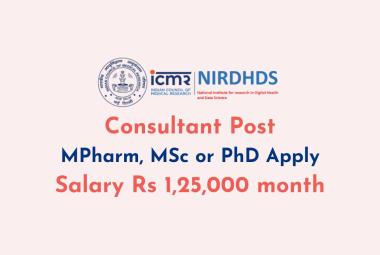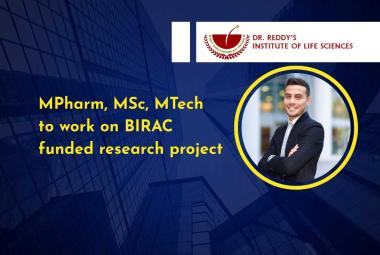




AUG 2014 ARTICLE LIST >>
PharmaTutor (August- 2014)
ISSN: 2347 - 7881
(Volume 2, Issue 8)
Received On: 08/06/2014; Accepted On: 13/06/2014; Published On: 01/08/2014
AUTHORS: Pratyush Kumar Das1, Shilpa Das1, Debasish Sahoo2, Jikasmita Dalei2, V.Madhav Rao2, Sunakar Nayak2, Swadhin Palo3
1Centre of Biotechnology, Siksha O Anusandhan University, Bhubaneswar, Odisha, India.
2Nitza Biologicals (P.) Ltd.Chandra Towers, Near Fortune Honda Showroom, Neredmet 'X' Road, Secundrabad, Andhra Pradesh, India.
3Roland Institute of Pharmaceutical Sciences, Berhampur, Odisha, India.
onlypratyush11@gmail.com
ABSTRACT:
Polymyxin B and Cerexin A are two polypeptide antibiotics, the first one discovered and incorporated quite earlier and the later one has still not been used in clinical trials for its high cytotoxic nature. Although Polymyxin was discovered very earlier but in the mid-way for some time it had lost its importance and was not used frequently due to its narrow spectra of action that only acts on gram negative microbes and because of its toxicity level. But with several new resistant gram negative microbes coming into the limelight responsible for causing many infections, Polymyxin B (the least toxic of all Polymyxins) has again been started to be used in pharmaceutical formulations and drugs. In this project, both Bacillus polymyxa and Bacillus cereus responsible for production of Polymyxin B and Cerexin A respectively were isolated from the rhizosphere of grass and cultured in the lab. They were confirmed by biochemical tests and then used to produce the corresponding antibiotics by submerged fermentation. The crude antibiotic thus obtained were purified by various methods like adsorption through activated charcoal, acetone precipitation, dialysis, Ion Exchange and Sephadex column chromatography and the results were compared to find the best possible way to purify the antibiotics keeping in mind that they show the maximum activity as possible on a lab scale. Further work on Cerexin A was not possible due to the unavailability of its standard solution. Work was carried out for quantitative estimation of purified and crude Polymyxin B by performing spectrophotometric assay against standard polymyxin.
How to cite this article: PK Das, S Das, D Sahoo, J Dalei, VM Rao, S Nayak, S Palo; Comparative Evaluation of Purification Methods for Production of Polypeptide Antibiotics – “Polymyxin B” and “Cerexin A” from Bacillus Species; PharmaTutor; 2014; 2(8); 188-200
[ABSTRACT WITH CITATION] [VIEW AS HTML]

REFERENCES:
1."Dorland's Medical Dictionary:antibacterial".
2.Waksman SA. "What Is an Antibiotic or an Antibiotic Substance?".Mycologia, 1947; 39(5), 565–569.
3. EzineArticles.com/227335
4.Witte W., "International dissemination of antibiotic resistant strains of bacterial pathogens". Infect. Genet. Evol., 2004; 4(3): 187–91.
5.Paulus H., Gray E., The Biosynthesis of Polymyxin B by growing cultures of Bacillus polymyxa, Journal of Biological Chemistry,1964; 239 (3): 865-71.
6.Katz E., “Inflence of valine, isoleucine and related compounds on actinomycin synthesis”, Journal of Biological Chemistry, 1960; 235: 1090-1094.
7.Katz E., Waldron C. R., AND Meloni M. L., “Role of valine and isoleucine as regulators of actinomycin peptide formation by Streptomyces chrysomallus”, Journal of Bacteriology,1961;82(4), 600-608.
8.Bernlohr R. W., NovelliG. D., “Some characteristics of bacitracin production by Bacillus licheniformis”, Archives of Biochemistry and Biophysics,1960; 87(2), 232-238.
9.Bernlohr R. W., Novelli G. D., in Bacteriologicalproceedings, Society of American Bacteriologists, Baltimore, 1960; p.149.
10.SNOKE J. E., “Formation of bacitracin by washed cell suspensions of Bacillus licheniformis” Journal of Bacteriology,1960; 80(4), 552-557.
11.Snoke J. E., “Formation of bacitracin by protoplasts of Bacillus licheniformis” Journal of Bacteriology,1961; 81(6), 986-989.
12.WinnickR. E., LisH., AND Winnick T., “Biosynthesis of gramicidin S. I. General characteristics of the process in growing cultures of Bacillus brevis”Biochimica et BiophysicaActa,1961; 49, 451-462.
13.Macdonald J. C., “Biosynthesis of valinomycin”,Canadian Journal of Microbiology,1960; 8, 27-34.
14.Kenneth Todar, PhD,“Antimicrobial Agents Used in the Treatment of Infectious Disease”, University of Wisconsin-Madison, Department of Bacteriology, 2009.
15.Vilain S., Luo Y., Hildreth M., and Brozel V. “Analysis of the Life Cycle of the Soil Saprophyte Bacillus cereus in Liquid Soil Extract and in Soil.” Applied Environmental Microbiology, 2006; 72(7), 4970–4977.
16.Hoffmaster A., Hill K., Gee J., Marston C., De B., Popovic T., Sue D., Wilkins P., Avashia, S., Drumgoole, R., Helma, C., Ticknor, L., Okinaka, R., and Jackson, J. “Characterization of Bacillus cereus Isolates Associated with Fatal Pneumonias: Strains Are Closely Related to Bacillus anthracis and Harbor B. anthracis Virulence”, Journal of Clinical Microbiology, 2006; 44(9), 3352-3360.
17.DelVecchio V., Connolly J., Alefantis T., Walz A., Quan M., Patra G., Ashton J., WhittingtonJ., Chafin R., Liang X., Grewal P., Khan A., and Mujer C. “Proteomic Profiling and Identification of Immunodominant Spore Antigens of Bacillus anthracis, Bacillus cereus, and Bacillus thuringiensis.” Applied Environmental Microbiology, 2006; 72(9), 6355–6363.
18.Pdf from Infectious Disease Epidemiology Section, Office of PublicHealth, Louisiana Department of Health and Hospitals (504-219-4563).













